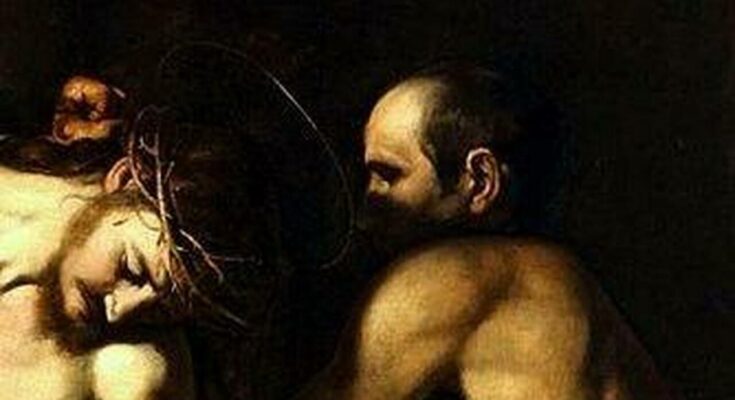Not in front, behind the scenes: you can even enter Caravaggio’s workshop, thanks to new technology and X-rays. And discover something secret, controversial, unknown about one of the most famous and popular artists, which still holds surprises.
The last painting analyzed is «The Martyrdom of Saint Ursula»in particular the lower part of the canvas was already damaged in the seventeenth century due to the rush to ship it. With new paint. This is why Intesa Sanpaolo’s work, on display at the Gallerie d’Italia, in the historic center of Naples, is so dark at its 40 centimeters: extraordinary, it had never been explored until a few months ago.
But now we see little more. Several identified elements restore the colors of the painter’s palette, among them the blue enamel color of Attila’s armor and the soldiers appears, a pigment present only in Messina’s “Nativity”. Some elements allow us to better read the landscape in the background, in the composition, and reconstruct the changes made during the work, in the settings of some of the characters, including the Hun king. “The artist’s subsequent conversion is recognizable, even in the curtains, details included in the definitive version” says restorer Laura Cibrario, who examined the ultra-high-resolution images with her colleague Fabiola Jatta, art historian Maria Beatrice de Ruggieri and engineer Claudio Seccaroni, the team formed by Intesa Sanpaolo. «Saving Caravaggio’s last painting means taking responsibility for protecting and preserving one of the most valuable works in the history of art. This commitment is realized in hard work, supported by professionals and skills, and is constantly updated» proudly says Michele Coppola, general director of Gallerie d’Italia. He underlined: «Innovation and new tools are important resources for the study, protection and enhancement of our cultural heritage and identity». In fact, the Cnr Catania Institute of Cultural Heritage Sciences collaborated on the project, an authority in the field, which has carried out a scan of the “Martyrdom of Saint Ursula” and has examined, in 2019, two other Caravaggios preserved in the city: the “Seven Works”, in the Pio Monte della Pietà, and «Flagellation» on display at Capodimonte (and, in recent years, in the museum, a memorandum of understanding with Ispc-Cnr and Vanvitelli University has led to the monitoring of many paintings by different authors, among them, Raphael’s «Madonna del divino amore»). «Macro X-Ray Fluorescence Imaging (MA-XRF) allows you to “see” inside a painting without touching it, using light at work.
The results are more interesting and integrate data collected with X-rays taken on the same canvas, but they are not always read univocally.
For «Seven Works», the scanner is mounted on a custom-built scaffold to cover the entire surface without moving the work from its original location. «In just three days», Romano explains, «25 scans were carried out, which allowed us to obtain complete mapping». And to describe the face hidden in the center of the scene with an unprecedented richness of detail: «The face of a young man drinking from a jug, which is reminiscent of the pose and places the character with a lantern on the edge of “The Taking of Christ in the Garden”, is considered one of Caravaggio’s self-portraits», explains Marco Cardinali, University professor of History of restoration and artistic techniques at Vanvitelli, adding that the picture documents the different phases of the executive process: from the graphic-image arrangement to the present interruption and erasure of the image.
«In contrast, no further substantial changes were found in “Flagellation”. But investigations with the latest technology make it possible to detect unexpected details, as well as confirm the existence of hidden characters that have been discovered with x-rays, infrared reflectography and other techniques used over the past half century. “Here, too, the conversion of a writer. This is “a Dominican monk or saint”, says the co-teacher de Ruggieri, author of numerous scientific publications on Caravaggio’s painting technique.


